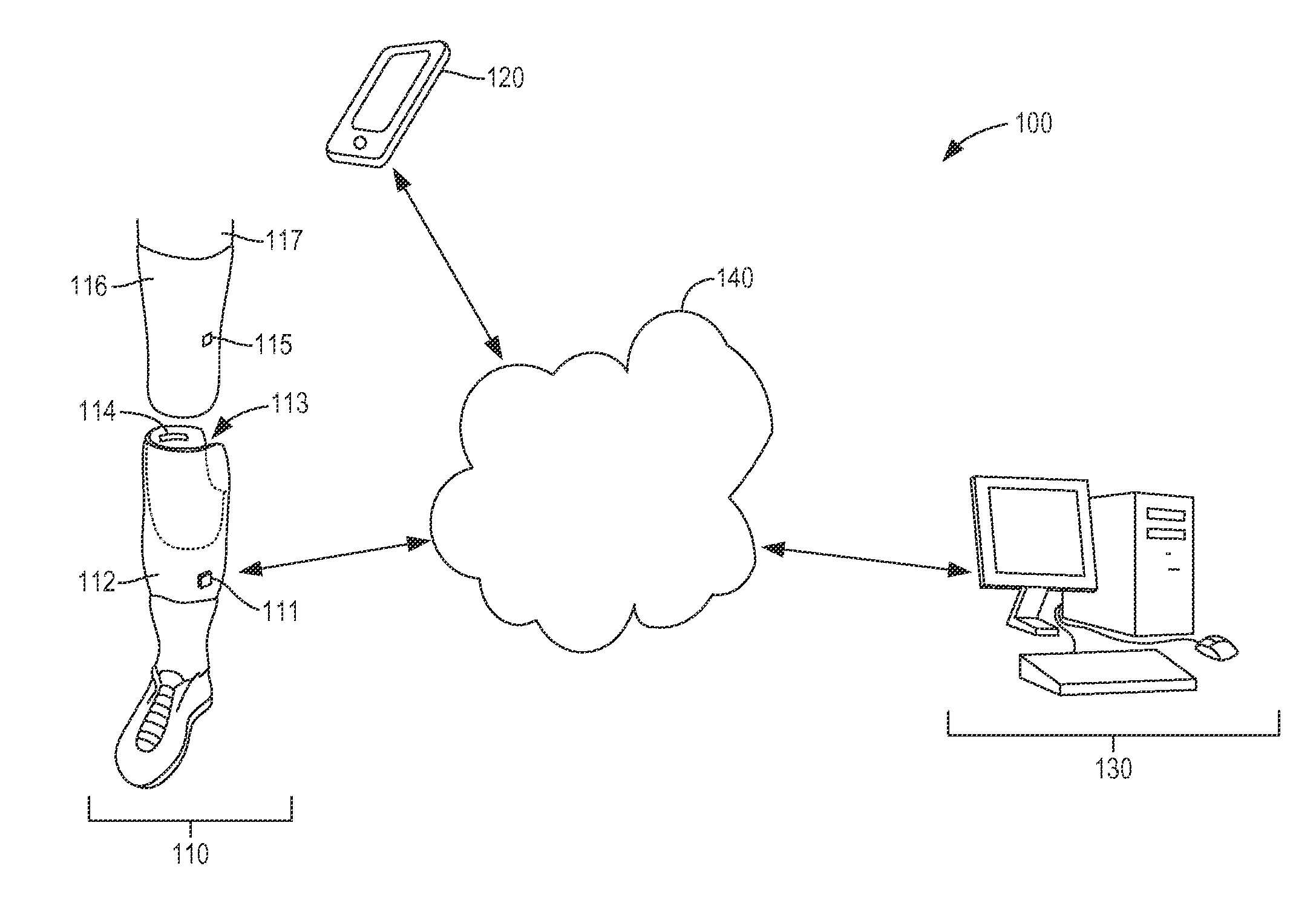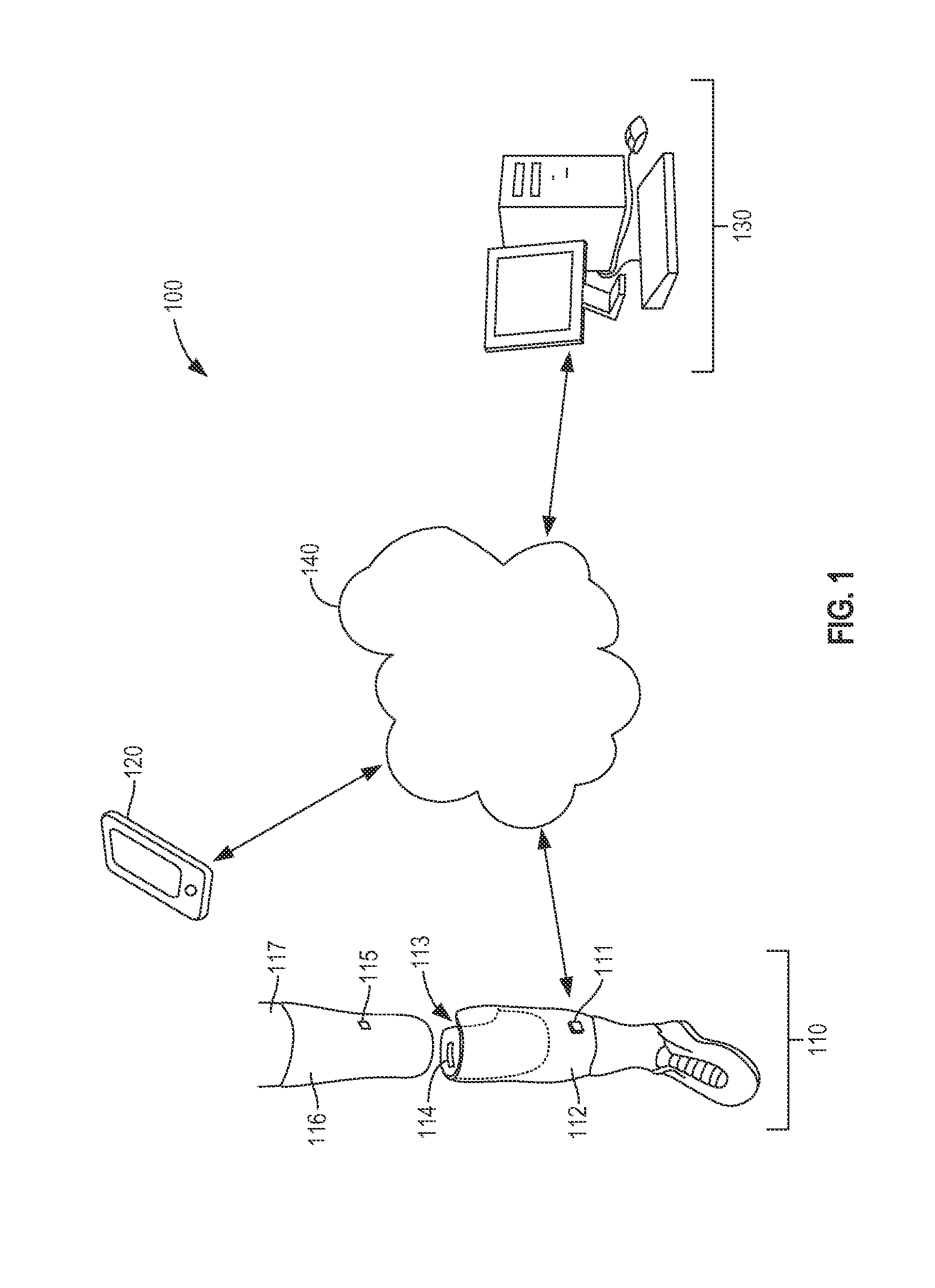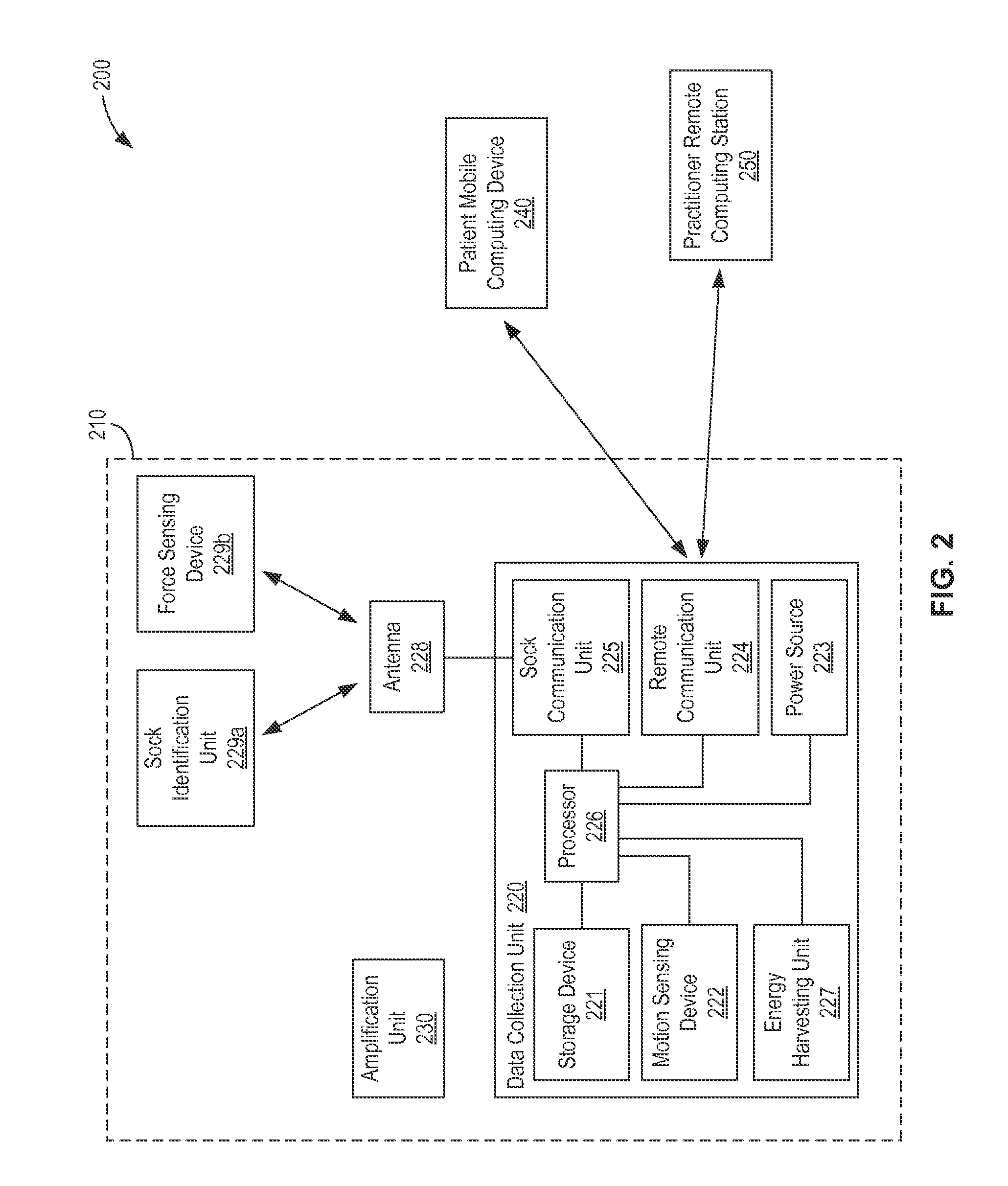Limb volume accommodation in people with limb amputation
a technology for limbs, applied in the field of limb volume accommodation in people with limb amputation, can solve the problems of patients experiencing daily fluctuations in residual limb volume, patients cannot ensure the fit of the socket, and patients' residual limbs continually change shape, etc., to facilitate the development of individualized treatment strategies, improve clinical outcomes, and enhance patient outcomes
- Summary
- Abstract
- Description
- Claims
- Application Information
AI Technical Summary
Benefits of technology
Problems solved by technology
Method used
Image
Examples
first embodiment
[0136]FIG. 5A shows an antenna 510 coupled to a prosthesis 520 according to a Antenna 510 may be operable to receive signals from one or more sensors, such as sensor 115, and may be coupled to a computing device such as data collection unit 111 to communicate received signals to that computing device.
[0137]Antenna 510 according to this embodiment is bonded to an exterior surface of a socket 530 of prosthesis 520, and extends from a brim 522 of prosthesis 520 toward an end opposite the end at which the brim is located. Antenna 510 may be made of any one or more conductive materials for generating current in response to being exposed to an electromagnetic wave, magnetic wave, microwave, or other type of radiation, including one or more metals (e.g., copper, silver, gold, etc.) and / or non-metals (e.g., a conductive polymer, graphite, plasma, etc.). Antenna 510 may extend partially or entirely along a length of socket 530, and may wrap around either a portion or an entire circumference...
second embodiment
[0141]FIG. 6B shows an antenna 610 according to a Antenna 610 is similar to that discussed with reference to FIG. 6A, except in this embodiment antenna 610 includes a third element 606 arranged in parallel with second portion 602b and second portion 604b. In the embodiment shown in FIG. 6B, third element 606 has a length the same as the combined length of second portion 602b and second portion 604b when arranged with a space between second portion 602b and second portion 604b, but in other embodiments may be shorter or longer than that combined length.
third embodiment
[0142]FIG. 6C shows an antenna 620 according to a Antenna 620 is similar to that discussed with reference to FIG. 6B, except in this embodiment third element 606 is separated into a first portion 606a and a second portion 606b. In this embodiment, first portion 606a and second portion 606b are separated by a gap 606c equal to a size of a gap between second portion 602b and second portion 604b. However, in other embodiments, first portion 606a and second portion 606b may be separated by a gap larger than or smaller than the size of the gap between second portion 602b and second portion 604b. Further, first portion 606a is electrically coupled to second portion 602b via a first connecting element 608a provided at an end of first portion 606a opposite gap 606c, and second portion 606b is electrically coupled to second portion 604b via a second connecting element 608b provided at an end of second portion 606b opposite gap 606c, where first connecting element 608a and second connecting ...
PUM
 Login to View More
Login to View More Abstract
Description
Claims
Application Information
 Login to View More
Login to View More - R&D
- Intellectual Property
- Life Sciences
- Materials
- Tech Scout
- Unparalleled Data Quality
- Higher Quality Content
- 60% Fewer Hallucinations
Browse by: Latest US Patents, China's latest patents, Technical Efficacy Thesaurus, Application Domain, Technology Topic, Popular Technical Reports.
© 2025 PatSnap. All rights reserved.Legal|Privacy policy|Modern Slavery Act Transparency Statement|Sitemap|About US| Contact US: help@patsnap.com



